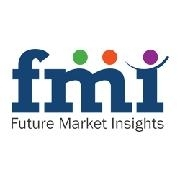Product advancements addressing key consumer issues to remain important forward market strategy among lining manufacturers
Global lining market prospects are likely to be significantly influenced by the increasing investments in oil and gas exploration activities and augmenting production capacities of refineries. Moreover, surging demand for trade through marine ports coupled with growing shipbuilding industry and frequent repair and maintenance of linings in shipping are some key factors favoring the growth of global lining market. The global lining market is estimated to be valued at US$ 3,958.7 Mn by 2018 end. Expanding at a modest CAGR of 3.9%, the global lining market is anticipated to reach a valuation of US$ 5,820.8 Mn, over the forecast period of 2018-2028, as per a recent study by Future Market Insights.
Marine Trade and Shipbuilding Activities Offering Potential Opportunities for Lining Adoption
Marine routes are major conveyance option for goods in the form of containers, dry and liquid bulk and roll on-roll off (Ro-Ro) type of cargos. Cost effective transfer of heavy and bulk materials in a single go fueling marine trade. Shipbuilding, too is contributing to the growth of global lining market. Availability of all necessary resources in Asia Pacific is found to be a key factor responsible for the growth of the shipbuilding industry in the region. Moreover, low labor cost and indulgent legislations are accelerating the shipbuilding industry, further pushing the demand for marine linings over the forecast period.
Polymer Lining to Remain Most Preferred Across Industries Through 2028; Demand for Eco-Friendly Products to Induce Novelties in Lining Market
Segmented into polymer lining, rubber lining, ceramic and carbon brick lining, and tile lining, the global lining market will witness significant revenue contribution from the polymer lining variant. The polymer lining segment is projected to hold a dominant share in terms of both market value and CAGR index. Growing demand for linings across the globe as well as environmental regulations in developed regions are the major factors driving the lining market. Moreover, increasing demand from marine, oil and gas, automotive, and chemicals industries is likely to drive the adoption of polymer lining in the global lining market. Epoxy resins are likely to dominant the global polymer lining market, owing to its excellent resistance to numerous chemicals couple with other technological advancements.
Request Sample Report @ https://www.futuremarketinsights.com/reports/sample/rep-gb-7246
Although solvent borne linings are likely to hold a significant share of the global lining market, considering increasing adoption of ecofriendly lining products in developed countries would propel the adoption of waterborne and powder linings. Stringent Government regulations and adoption of lining products with low-VOC content are key factors pushing the demand for waterborne and powder linings. Manufacturers in the global linings market are constantly investing in R&D activities to introduce new products and technologies for product differentiation, further driving the lining market.
However, volatile prices of raw materials including epoxy and polyurethane and stringent government directives regarding VOC emissions across various regions are key restrainers impacting the overall growth of global lining market.
China followed by Western Europe and North America, are likely to showcase increased adoption of linings. Fast-paced industrial growth in China is significantly contributing to sales of lining products in the region, which is expected to hold nearly 35% of the market, by 2028.
Major global suppliers of linings are channelizing efforts towards developing partnerships with end users in order to better address the demand for specific requirements. Product customization is likely to remain a key differentiation strategy among key manufacturers in the global lining market. Top players in the global linings market are The Sherwin Williams Company, PPG Industries, Inc, Akzo Nobel N.V., Hempel A/S, The Jotun Group, Solvay SA, Teknos Group, and STEULER-KCH GmBH.
Request Report Methodology@ https://www.futuremarketinsights.com/askus/rep-gb-7246

